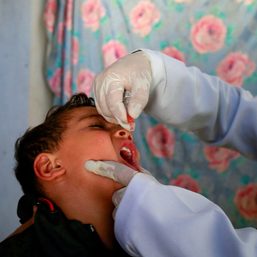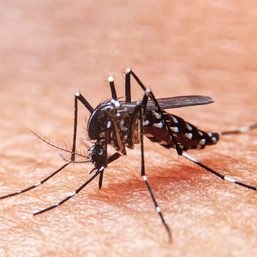SUMMARY
This is AI generated summarization, which may have errors. For context, always refer to the full article.
![[OPINION] Beyond infrastructure: Ensuring healthcare access for the poor](https://www.rappler.com/tachyon/2024/03/tl-healthcare-access-03402024.jpg)
The Department of Health (DOH)’s announcement in the 2nd National Health Sector Meeting to build 28 primary care facilities by 2028 under the Bagong Urgent Care and Ambulatory Services (BUCAS) has been received with much optimism.
BUCAS is envisioned to be operated by the DOH and will serve as an extension of hospitals by providing outpatient consultations, emergency care, laboratory tests, minor surgeries, and free medicine for indigent patients. The DOH anticipates that the primary care benefits package will be under PhilHealth’s responsibility.
The initiative, aligned with the World Health Organization’s (WHO) declaration of primary health care as one of the 10 global health threats in 2019, is applauded for its intent to alleviate the strain on public hospitals and enhance healthcare accessibility. Rightfully so, as there is a need to increase the number of quality health facilities in the country.
In light of the planning for constructing BUCAS facilities from 2024-2028, we offer recommendations to ensure that the infrastructure will address the healthcare needs of the marginalized.
Building blocks
Targeting the poor and underprivileged: The plan targets to create 28 facilities for the 28 million poor Filipinos. However, based on the monthly poverty threshold of P13,797.00 in 2023, the number of poor families is 25.24 million. Thus, indicators to define and identify the 28 million poor Filipinos slated to benefit from these facilities demand precision. Prioritizing regions with the highest poverty incidence and population-to-health center ratio serves as good starting points.
Improving access to affordable medicine: A cohesive healthcare system must also strive to provide affordable medicine in drugstores and pharmacies. Given that the patient journey often does not end in outpatient consultations, diagnosis, and treatment, the proposed BUCAS centers should be linked with means to ensure the affordability of quality medicines not offered in their facilities.
Addressing the poor’s barriers to healthcare: More importantly, constructing infrastructure requires acknowledging the need for additional healthcare professionals and understanding the poor’s barriers to healthcare.
Most healthcare professionals in the Philippines are clustered in urban areas or have left the country, leaving fewer professionals where people are poorest. Hence, strategic personnel planning, especially for the underserved areas, and complementing long-term strategies outlined in the DOH Human Resources for Health (HRH) Philippine Master Plan 2020-2040 is necessary.
Aside from this, understanding patterns of health-seeking behavior among the poor is crucial. Factors such as lack of access to information on available health services, absence of time to consult professionals, and reluctance to disclose their health conditions hinder them from consulting healthcare facilities. This calls for health literacy and awareness campaigns and promoting positive perceptions toward seeking primary care among the poor.
Minimizing risks, maximizing opportunities
Currently, the government has identified Tacloban, the Bicol region, and Batangas as possible locations based on the availability of land and the willingness of the local governments. The strategy is to utilize the lands of state universities and colleges and install container vans as temporary care centers while facilities are being constructed. While the availability of land is a necessary criterion, this must be supported with evidence-based initiatives to identify locations where most people could be served.
The DOH’s Philippine Health Facility Development Plan (PHFDP) mapped and constructed primary care facilities (PCFs) in each province using the following considerations: land and building availability, accessibility to transportation, land topography, access to utilities, level of hazard, and socio-economic situation. Developing similar parameters to better situate BUCAS centers is imperative.
Planning for resilience: Given that the Philippines ranked first in the list of disaster risk countries in 2023, developing resilient health infrastructure should go beyond constructing climate-resilient buildings. Accounting for resilience should consider the capacity of existing health systems to ensure minimal disruption to services, and the accessibility of road and transport networks relative to the population at risk during disaster and conflict.
Strengthening local government capacities: We further recommend that the initiative be careful not to undermine the efforts of decentralization. A top-down approach may overlook local context sensitivity and the capacity of local decision-making authorities, potentially leading to services that may not adequately address local health disparities. Establishing primary care facilities should be a collaborative effort between the national and local governments to strengthen the capacity of local health departments and promote an inclusive and tailored approach to healthcare delivery.
Linking with existing health systems: Currently, recommendations to integrate services of BUCAS with Malasakit Centers, Super Health Centers and Regional Specialty Centers have been put forward by Senator Bong Go. While BUCAS centers are intended to be managed by the DOH, links with existing public hospitals, rural health units, and other healthcare systems should be developed to ensure the continuity of care, enhance referral pathways, and provide comprehensive health services for the patients.
Scaling for sustainability: The current plan for constructing BUCAS centers spans five years. While the objective is not to continuously increase the number of health facilities, scaling similar interventions to address the health needs of the population requires capacitating healthcare personnel, maintaining the infrastructure, and improving collaboration with respective local governments to maximize the use and allocation of resources.
We reiterate that the government’s goal to construct additional healthcare facilities is of utmost importance and warrants full attention. After all, the health stations, RHUs, and HCs serve as entry points into the health system.
However, the effectiveness of infrastructure hinges on more than just steel and concrete. Policymakers should prioritize initiatives that strengthen not only infrastructure but also address the underlying barriers to healthcare access for the poor.
More than building structures, we must break down barriers to healthcare access. – Rappler.com
Kenneth Y. Hartigan-Go is the Senior Research Fellow for Health Governance at the Ateneo Policy Center, School of Government, at the Ateneo de Manila University.
Angel Faye G. Castillo is the Program Manager for Health Governance at the Ateneo Policy Center, School of Government, at the Ateneo de Manila University.
Ella Mae C. Eleazar is the Research Assistant for Health Governance at the Ateneo Policy Center, School of Government, at the Ateneo de Manila University.
ALSO ON RAPPLER
- [OPINION] 5 thoughts about the Philippine healthcare system
- Exodus of healthcare workers from poor countries worsening, WHO says
- [ANALYSIS] What they don’t tell you about Philippine education and health
Add a comment
How does this make you feel?







![[ANALYSIS] Hippocrates and hypocrites](https://www.rappler.com/tachyon/2024/07/TL-medical-ethics-june-27-2024.jpg?resize=257%2C257&crop=314px%2C0px%2C720px%2C720px)
![[Free to disagree] Why investigate Bell-Kenz Pharma Inc?](https://www.rappler.com/tachyon/2024/05/TL-why-investigate-punish-bell-kenz-pharma-inc-May-6-2024.jpg?resize=257%2C257&crop_strategy=attention)




There are no comments yet. Add your comment to start the conversation.